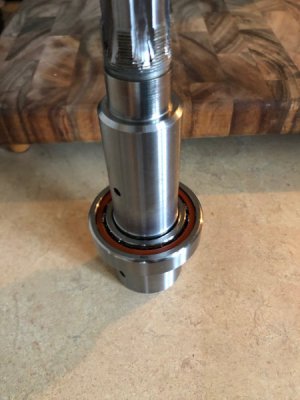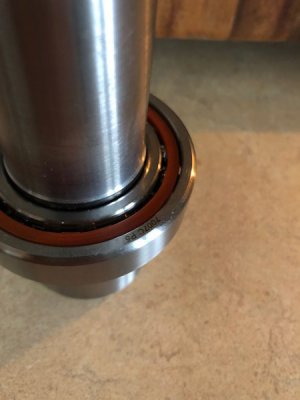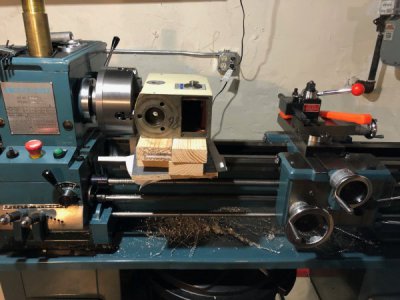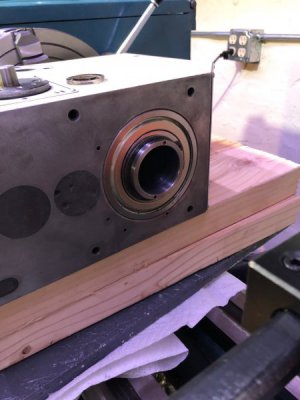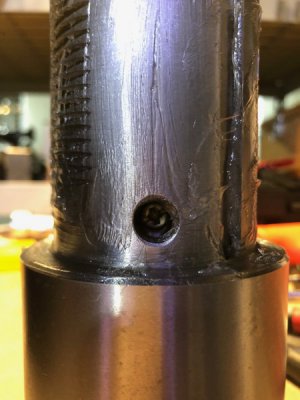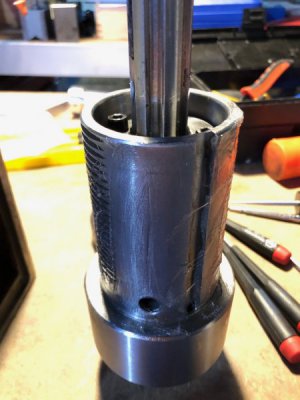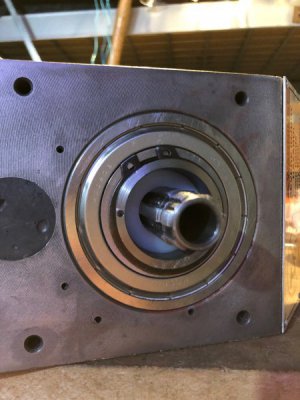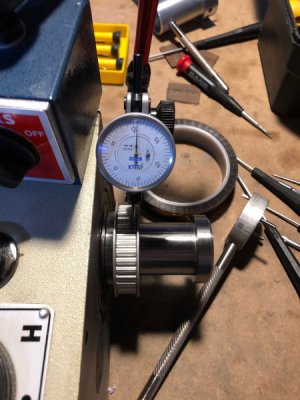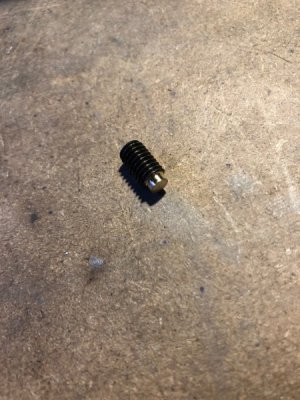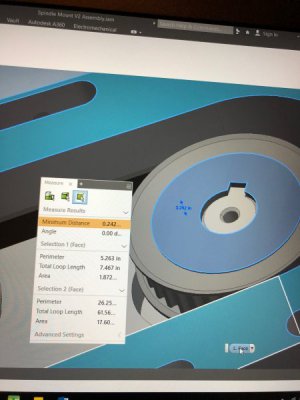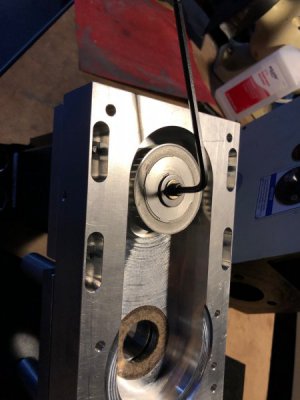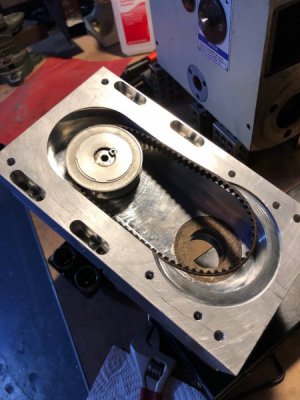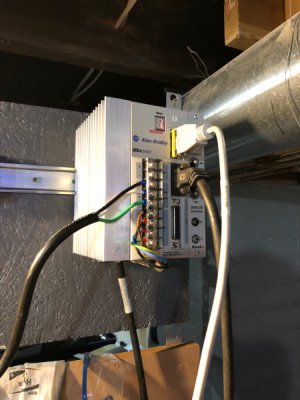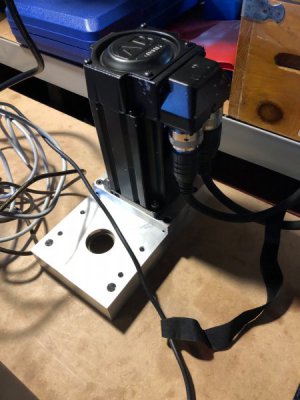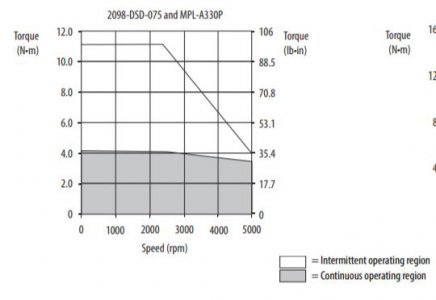- Joined
- Mar 26, 2018
- Messages
- 2,725
Continuing...
I did a test fit of the pulley and it was a light hand press fit.
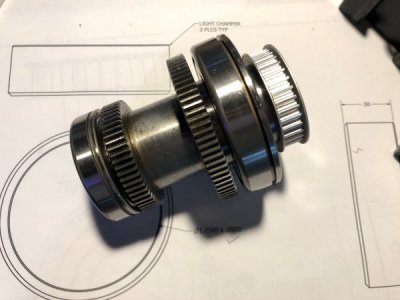
A quick check of runout yielded around .0025 at the teeth (this ended up around .0010 once the spindle was fully assembled)
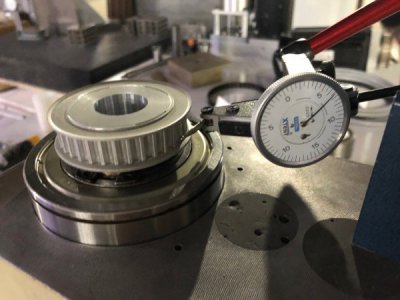
The spindle pulley drives the spindle through 2 opposed keyways 180 degrees apart. I broach these keyways using the lathe and a custom broach bushing. This bushing has been a pain since it was cut with a significant taper on the lathe which I didn't catch until after I milled the keyways. To correct this I tried filing it, but that mostly got it out of round.
Since the new bore on the pulley was smaller I decided to use the glue chuck method to remount the bushing in the lathe and cut the OD.
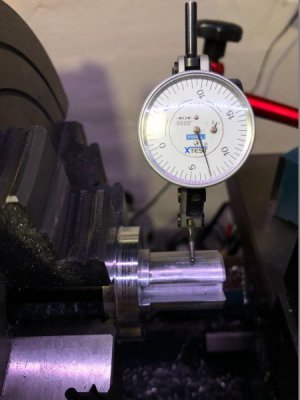
A light skim cut brought down the high spots until the bushing was a nice sliding fit to the bore. The keyways were filed to correct the depth. Not pretty but it worked.
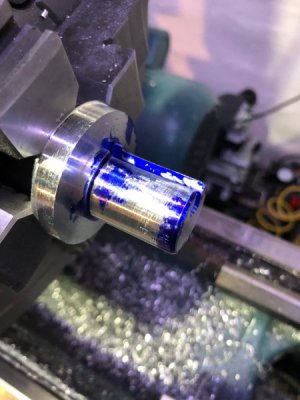
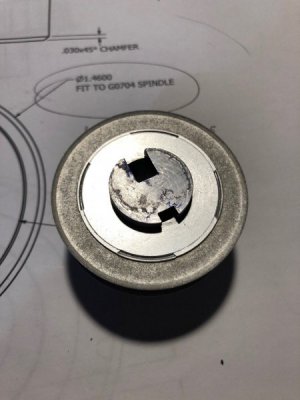
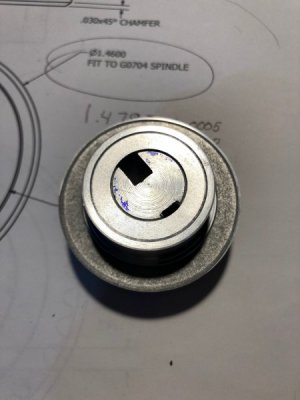
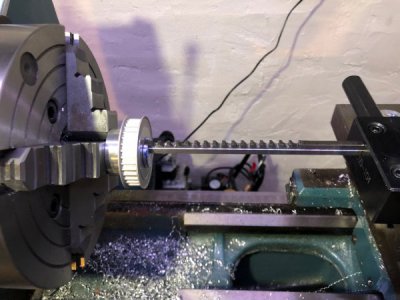
After broaching pass #1
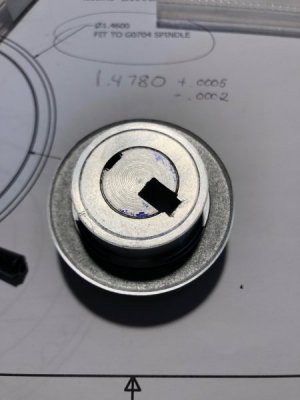
and #2
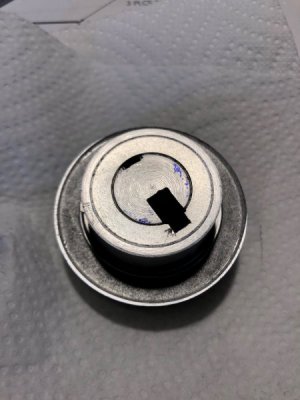
From here the bushing is rotated 180 degrees and a key is installed to hold it at the right angle
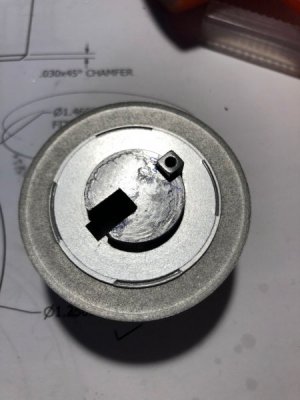
and the second keyway is cut in the same manner
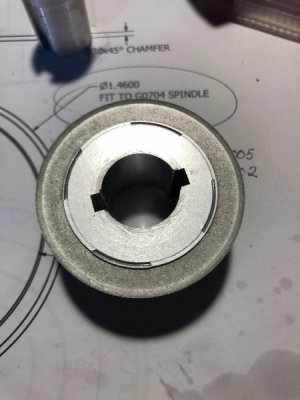
And the spindle pulley is done except for light hand fitting to fit the keys to the roughly machined spindle spline.
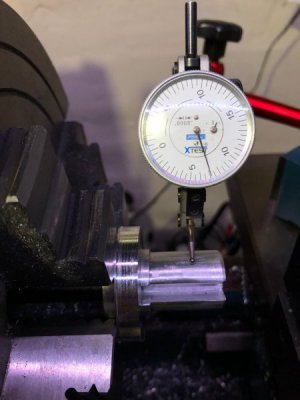
I did a test fit of the pulley and it was a light hand press fit.

A quick check of runout yielded around .0025 at the teeth (this ended up around .0010 once the spindle was fully assembled)

The spindle pulley drives the spindle through 2 opposed keyways 180 degrees apart. I broach these keyways using the lathe and a custom broach bushing. This bushing has been a pain since it was cut with a significant taper on the lathe which I didn't catch until after I milled the keyways. To correct this I tried filing it, but that mostly got it out of round.
Since the new bore on the pulley was smaller I decided to use the glue chuck method to remount the bushing in the lathe and cut the OD.

A light skim cut brought down the high spots until the bushing was a nice sliding fit to the bore. The keyways were filed to correct the depth. Not pretty but it worked.




After broaching pass #1

and #2

From here the bushing is rotated 180 degrees and a key is installed to hold it at the right angle

and the second keyway is cut in the same manner

And the spindle pulley is done except for light hand fitting to fit the keys to the roughly machined spindle spline.


